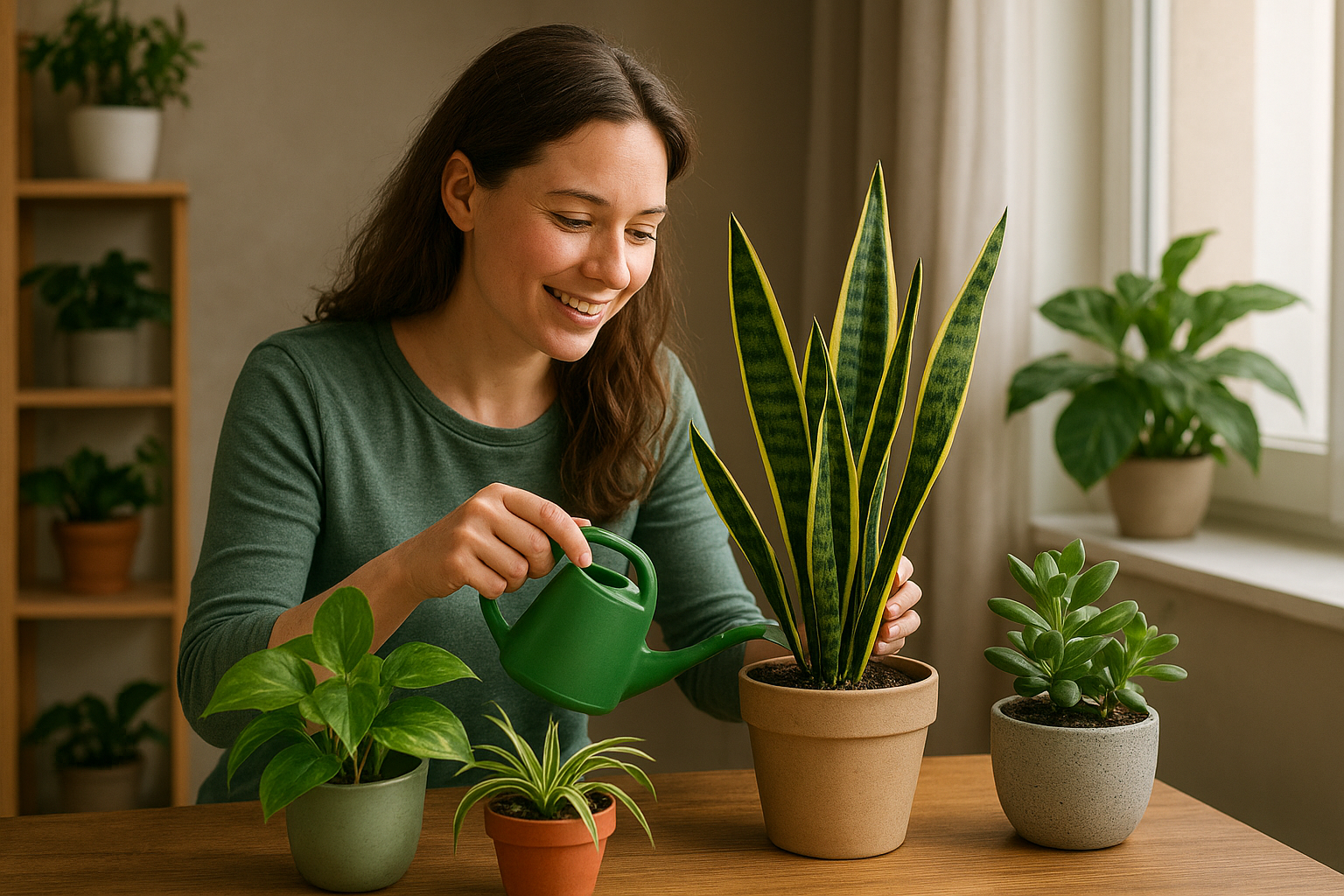Caring for plants at home can be one of the most rewarding hobbies. It connects you with nature, brings beauty to your living space, and even improves your mood. But for many beginners, the idea of looking after plants feels overwhelming. Questions like “How often should I water?” or “Will my plant survive indoors?” can create unnecessary stress. The good news is that plant care doesn’t have to be complicated. With the right approach, you can build confidence and enjoy the process instead of worrying about it.
Why Start With Plants at Home?
Houseplants do much more than decorate a room. They can:
- Purify the air and improve indoor quality.
- Reduce stress and promote relaxation.
- Make your home more welcoming and cozy.
- Inspire responsibility and mindfulness in daily routines.
When you understand these benefits, caring for plants becomes less of a task and more of a lifestyle choice.
Choose the Right Plants First
The biggest mistake beginners make is starting with plants that demand too much care. Instead, begin with species that are known to be forgiving and resilient. Examples include:
- Snake Plant (Sansevieria): Requires little water and thrives in low light.
- Pothos (Epipremnum aureum): Grows easily and tolerates a variety of conditions.
- Spider Plant (Chlorophytum comosum): Great for beginners and even helps clean the air.
- Succulents: Compact, low-maintenance, and ideal for small spaces.
By choosing plants suited for beginners, you’ll reduce the stress of constant monitoring.
Learn the Basics of Watering
Overwatering is one of the most common reasons plants die. Here are a few simple rules:
- Always check the soil before watering. If the top inch feels dry, it’s time to water.
- Use pots with drainage holes to avoid water accumulation.
- In general, most indoor plants prefer being slightly underwatered rather than soaked.
- Adjust watering depending on the season—plants need less water in winter.
Once you develop the habit of checking the soil instead of following a strict schedule, watering becomes much easier.
Light Is More Important Than You Think
Every plant needs light, but the type and intensity can vary. To reduce stress:
- Place plants that need bright light near windows with indirect sunlight.
- Use sheer curtains to protect plants from direct, burning rays.
- For low-light plants like snake plants, corners and shaded rooms work just fine.
- If your home has very little natural light, consider investing in grow lights.
Understanding your plant’s light needs prevents disappointment and helps them thrive.
Start With a Simple Routine
To avoid feeling overwhelmed, build a straightforward care routine:
- Pick a specific day once a week to check all your plants.
- On that day, test the soil, remove yellow leaves, and wipe the leaves with a damp cloth.
- Keep a small notebook or use an app to track watering and repotting schedules.
By making plant care a regular but light routine, you’ll create consistency without pressure.
Don’t Fear Repotting
Many beginners stress when their plants outgrow their pots. Repotting is simpler than it looks:
- Choose a pot one size larger than the current one.
- Use fresh, well-draining soil.
- Gently remove the plant, shake off excess old soil, and place it in the new pot.
- Water lightly and let the plant settle in.
Think of repotting as giving your plant a bigger home, not a risky procedure.
Keep Tools Minimal
You don’t need a lot of fancy equipment to start with plant care. A few basics are enough:
- A watering can with a narrow spout.
- A pair of pruning scissors.
- Quality soil suitable for indoor plants.
- A cloth or spray bottle for cleaning leaves.
The simpler you keep your tools, the easier the whole process feels.
Learn to Observe
Plants often “tell” you what they need. Stress-free plant care comes from paying attention:
- Yellow leaves: Often a sign of overwatering.
- Drooping leaves: Could mean underwatering or lack of light.
- Brown tips: Usually low humidity or excess fertilizer.
When you observe these small signs, you can adjust care before problems become serious.
Make It Enjoyable
Don’t treat plant care like a chore. Instead:
- Play your favorite music while checking your plants.
- Use plant care as a short mindfulness practice.
- Take before-and-after photos to track growth progress.
- Involve family members, especially children, to make it a shared activity.
When plant care becomes enjoyable, stress naturally disappears.
Growing Confidence With Time
The most important tip is to be patient with yourself. Everyone makes mistakes in the beginning—overwatering, placing a plant in the wrong spot, or forgetting to fertilize. These experiences are part of the learning process. With time, you’ll develop confidence, and caring for plants will feel natural.
Final Thoughts: A Green Journey Without Pressure
Taking care of plants at home should never feel like a burden. By choosing the right plants, focusing on the basics of water and light, and building a simple routine, you can create a stress-free and rewarding experience. Each plant you grow successfully will boost your confidence and bring more joy into your home.
So, start small, observe, and enjoy the journey. Soon, you’ll realize that plants aren’t just decorations—they’re companions that add beauty, peace, and a touch of nature to your everyday life.

